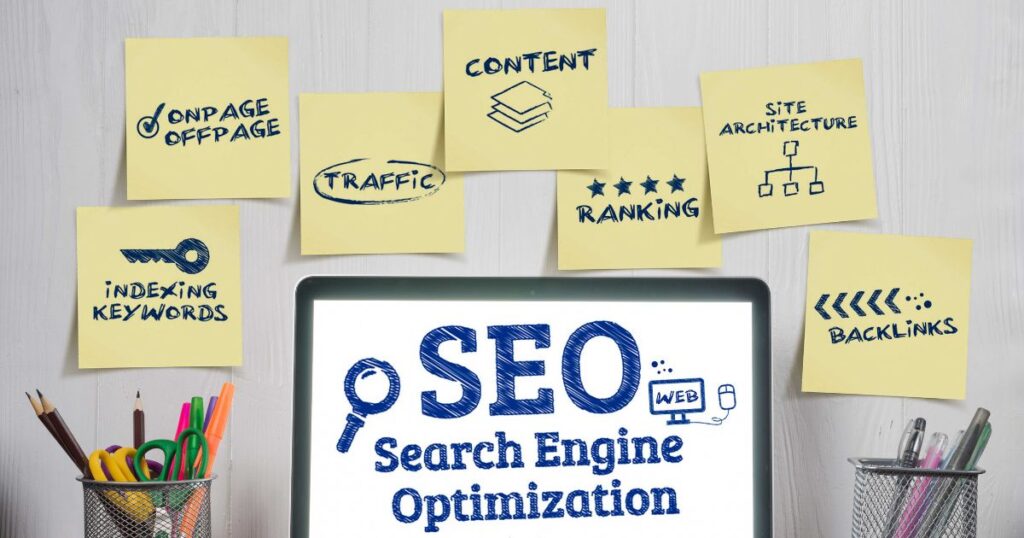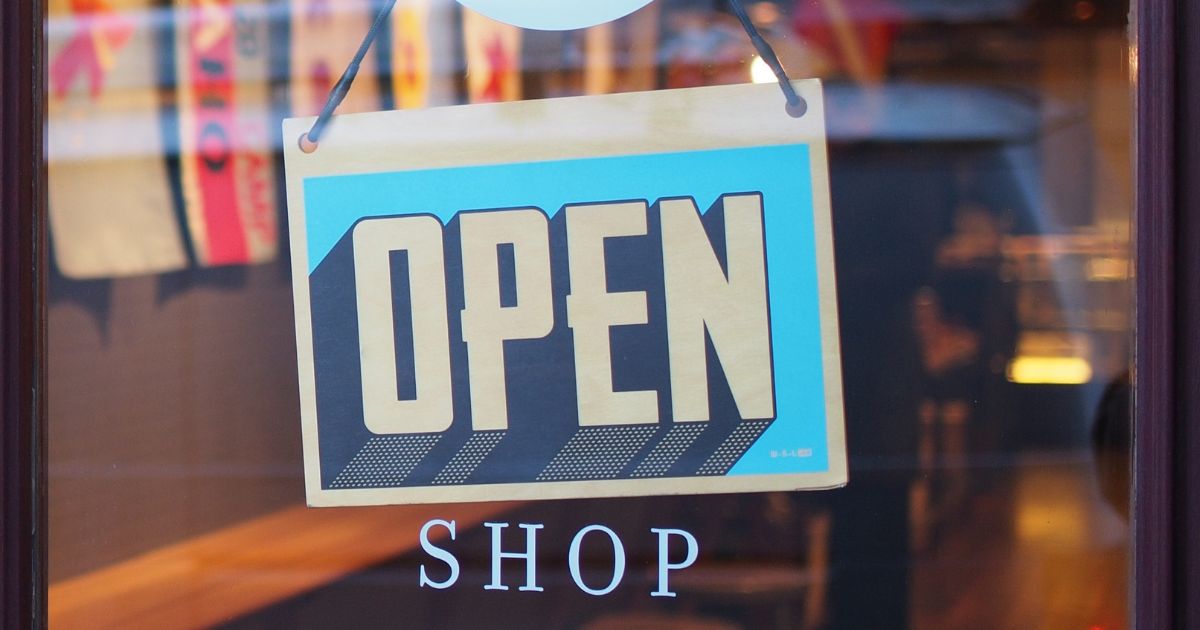You probably already this: Paying for ads to drive traffic to your online store will only get more expensive. That’s why having a solid SEO strategy is crucial for any Ecommerce business, to increase organic traffic and improve profitability.
This Shopify SEO checklist is designed to help you enhance your store’s visibility on Google, improve search engine rankings, and boost your organic traffic.
Technical SEO
Technical SEO includes everything SEO that’s not content-related, e.g. site structure, robots.txt file, broken links, redirects, and more. Let’s dive in.
Sitemap And Site Structure
First things first: make sure that the Google crawlers have easy access to all relevant pages on your Shopify store. To do that, you need to submit your sitemap in Google Search Console (GSC).
Keep your site structure simple, and navigation clear, to improve your sitemap’s crawlability. It’s best practice to make sure all products can be found with 3 clicks or less from the homepage.
Shopify automatically generates a sitemap for every store. Yours can be found at www.yourstore.com/sitemap.xml.
Note that you don’t want ALL of your pages indexed, for example, the check-out URLs.
In this case, you need to tweak all URLs that include /checkout/ to ‘no-index’ in your robots.txt file. This file gives the Google Bot directives regarding which pages to crawl and index, and which ones don’t.
Indexing
Make sure to index your homepage in GSC when you launch your shop, and whenever you make significant changes or create new pages (index them directly).
Canonicalization And Duplicate Content
Duplicate content means you have more than one URL with the same content. This is the case with the 3 color variants of your best-selling T-Shirt, as well as to the Shopify URL structure of having /collections/X/products/Y, and /products/Y, leading to the same SKU.
The impact of internal duplicate content is that the SEO juice will be cannibalization: The SEO juice will be split between multiple pages, hurting the rankings.
Canonicalization is the way to fix internal duplicate content, by telling the Google Bot which one of the similar URLs it should consider as the ‘canonical’. This URL will get priority when it comes to ranking and showing in organic results.
Schema Markup
Shopify also comes automatically with scheme markup, which helps the Google Bot understand the meaning of the different elements on your pages, e.g. your price, product description, reviews, etc.
Fix SEO Issues
If your shop is more mature, continuously review it for broken links (fix or redirect) and other technical issues such as images missing alt-tags or pages missing meta descriptions.
You can find these issues on GSC, or using paid tools such as SERanking, SEMRush, or Ahrefs.
If an old SKU is no longer available, redirect it to the most relevant SKU or collection URL (301 redirect if it’s gone for good, or 302 if it’s only out of stock and planned to return).
Mobile-First SEO Strategy
Mobile-friendliness is now a crucial ranking factor, given the increasing number of people shopping on their mobile devices. Your site should be responsive, providing a seamless experience across all devices.
Site Speed And Core Web Vitals
Google’s Core Web Vitals, which measure loading performance, interactivity, and visual stability, are also essential to consider. You can read more about Core Web Vitals in this Google article.
Site speed is another critical factor; a slow site can frustrate users and negatively impact your SEO. You can check your site’s speed and get recommendations with Google’s PageSpeed Insights. Note that results can be affected by the geo-location and time of each search.

Shopify On-Page SEO Strategies
On-page SEO involves optimizing individual pages on your site to rank higher and earn more relevant traffic.
Keyword Research
Solid keyword research is at the base of every good Start with keyword research tailored for e-commerce. Use tools like Google Keyword Planner or SEMrush to find high-volume, low-competition keywords relevant to your products.
URLs Headlines And Metas
Include the relevant keywords from your research on all relevant pages. The main SEO elements to keep in mind are:
- URL
- Headlines (H1, H2, H3)
- Meta Title
- Meta Description
The contents of these elements are often automatically filled by Shopify but might need some tweaks. Working with boilerplates for PLP and PDP metas can save you a lot of time.
For example, here are the ideal elements for a PDP of a red ceramic coffee mug with a sunset design:
- URL: www.yourstore.com/products/ceramic-coffee-mug-red-sunset
- H1: Ceramic Coffee Mug Red Sunset (should be automatically created by Shopify)
- Meta Title: Ceramic Coffee Mug Red Sunset | YourStore
- Meta Description: Discover the beautiful ceramic coffee mug red sunset in YourStore. Enjoy free shipping on all orders over $50. Buy now.
The more keywords you include on your pages, the higher your chances to rank organically and drive those free organic clicks.
SEO Copy
SEO copy is a text box you can add at the bottom of your homepage and PLPs, to help rank for relevant search terms. The content can describe what you’re selling, a buying guide, or FAQs.
To add SEO copy to your PLPs, you’ll need to edit your Shopify theme and add a ‘custom HTML’ section. Then, you can add specific SEO-optimized copy on each of your listing pages.
Image SEO
Image SEO was responsible for driving up to 15% of the organic traffic on some of the websites I’ve worked on. Google can’t automatically know what content is showing on your images (at least that was the case before AI), so you need to help it understand better.
Optimizing image SEO includes decreasing image sizes (for faster site speed), optimizing file names to include relevant info, and adding alt-tags to all images to tell Google Bot what’s on them. You can read more about Image SEO here.
Internal Linking and Navigation
Internal linking is important both for improved site crawlability, as well as for your customer’s user experience. Good navigation means that your customers can find what they’re looking for fast.
This means, no more than 3 clicks from the homepage to any product, and making sure that you don’t have any unlinked, ‘orphan’ pages. A clear, intuitive site structure improves user experience and makes it easier for search engines to crawl and index your site.
Breadcrumbs also help your customers orient themselves while browsing your store and are also recommended by Google.
Blogging And Content Marketing
Blogging and content marketing are other effective strategies for driving potential customers in the higher funnel stages. Regularly publishing high-quality, relevant content can help you rank for more keywords and position your store as an authority in your niche.
Off-Page SEO Strategies And Backlinking
Off-page SEO refers to actions taken outside of your website to impact your rankings within search engine results pages. Building high-quality backlinks is a crucial part of this. While it’s tempting to focus on quantity, it’s the quality of the backlinks that matters most. Aim for links from reputable, relevant sites.

Write Link-Worthy Content
My favorite off-page strategy is pretty straightforward: Write link-worthy articles in your blog section. Your content should cover a topic that’s bigger than your brand or products, to make it relevant for a larger audience. Example: Statistics about the online fashion vertical.
Guest Posting
If you offer to write an article for an external website or get an interview with an online magazine, this can get you some backlinks. The higher the domain authority of the linking domain, the better.
PR
You can work with a PR agency to create some noise around your business, with the hope that some relevant magazines and influencers will catch the news and link to your website. If you have the internal resources and act in the US market, SparkToro is a great audience research tool that can expose which websites, social pages, and podcasts you should reach out to.
Linking Requests
This last strategy has become the hardest over the years. Using SEO research tools like Ahrefs, SEMRush, and SERanking, you can see which domains are already linking to your competitors and reach out to them.
However, very few will do this for free. Finding relevant results, pitching them with a cold Email, and getting a ‘pure’ backlink from a valuable domain is hard work.
Monitoring and Improving SEO
Effective SEO requires regular monitoring and improvement. Use free SEO tools like Google Search Console and Google Analytics for a good performance overview – how many clicks you’re getting, your organic ranking, and how much revenue is coming via organic search results.
The Google Ads Keyword Planner is another great free tool for keyword research.
Paid tools can provide more in-depth insights, and I use them, especially for their competitor analysis features.
Regularly review your performance data and make necessary updates and optimizations. SEO is not a one-time task but an ongoing effort.
Shopify SEO Apps
You can find some great SEO apps in the Shopify app store. The most popular SEO apps are:
You can review them and see which apps best fit your budget and needs. I always recommend my clients to install the app that allows for most automation. The extra costs will be negligible compared to the time saved and the SEO returns.
Conclusion
SEO is a powerful tool for driving organic traffic to your Shopify store. This checklist provides a comprehensive guide to optimizing your store’s SEO. Remember, SEO is a marathon, not a sprint. It requires ongoing effort and patience, but the rewards are well worth it. So, start optimizing today and watch your Shopify store climb the search engine rankings in 2024.
Further Reading
- How To Build High-Converting Product Detail Pages on Shopify
- How To Increase Conversion Rate On Shopify
- 29 Common SEO Mistakes to Avoid on Ecommerce Websites
- PPC vs. SEO: Which One Is Better? Pros, Cons, And When To Use Which
- Demand Gen: Google Ads Version of Paid Social Campaigns?

